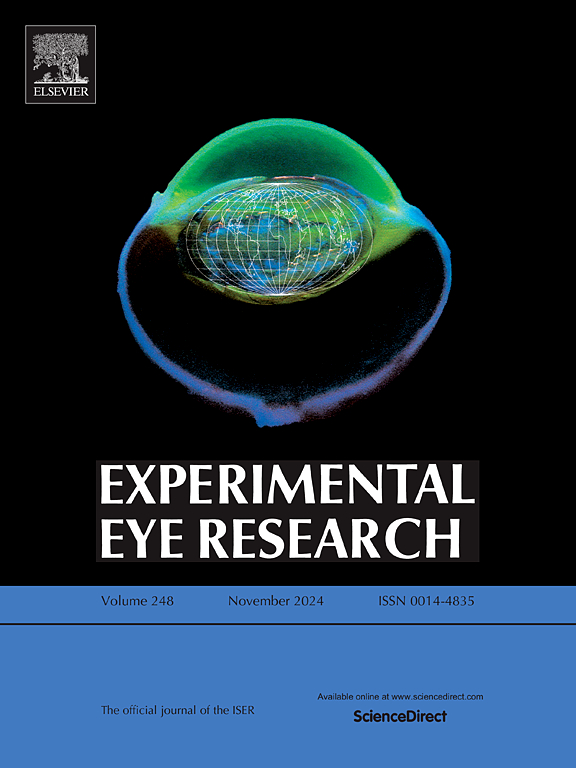视神经脊髓炎谱系障碍免疫相关生物标志物的研究发病机制及治疗途径
IF 3
2区 医学
Q1 OPHTHALMOLOGY
引用次数: 0
摘要
视神经脊髓炎(NMOSD)是一种主要影响视神经和脊髓的中枢神经系统自身免疫性炎症疾病。大约80%的患者有针对水通道水通道蛋白-4 (AQP4)-IgG的抗体,这种抗体在星形胶质细胞上表达。该蛋白被证明是NMOSD的生物标志物和致病原因。研究人员发现,针对髓鞘少突胶质细胞糖蛋白(MOG) IgG的抗体可以作为一种被称为MOG抗体相关疾病(MOGAD)的独特疾病的生物标志物。此病与aqp4 - igg阳性NMOSD有一些相似之处,但在病因、临床特点、治疗反应、预后等方面存在明显差异。血清AQP4抗体的检测证实了NMOSD血清阳性的诊断。然而,仍不确定AQP4-IgG水平与疾病活动性、严重程度、对药物的反应性或长期影响之间是否存在相关性。此外,仍然需要建立和确认专门用于诊断为血清阴性NMOSD患者的生物标志物。本研究主要检查NMOSD的免疫学方面,这可能对临床实践产生重大影响。这些意义包括可能使用新的生物标志物来帮助NMOSD的早期和正确诊断,以及开发当前的治疗方案以提高NMOSD患者的长期预后。本文章由计算机程序翻译,如有差异,请以英文原文为准。
Immune-related biomarkers in the neuromyelitis optica spectrum disorder; pathogenesis and therapeutic approaches
Neuromyelitis optica spectrum disorder (NMOSD) is an autoimmune inflammatory disease of the central nervous system that mostly affects the optic nerves and spinal cord. About eighty percent of patients have antibodies that are directed against the water channel aquaporin-4 (AQP4)-IgG, which is expressed on astrocytes. This protein was shown to be both a biomarker and a pathogenic cause of NMOSD. Researchers have discovered that antibodies against myelin oligodendrocyte glycoprotein (MOG) IgG can serve as a biomarker for a distinct condition known as MOG antibody-associated disease (MOGAD). This condition shares some similarities with AQP4-IgG-positive NMOSD, but it has distinct differences in terms of its underlying causes, clinical characteristics, response to treatment, and prognosis. Identifying AQP4 antibodies in the blood serum confirms the diagnosis of seropositive NMOSD. Nevertheless, it remains uncertain if there is a correlation between AQP4-IgG levels and disease activity, severity, responsiveness to medication, or long-term effects. Furthermore, there is still a need to establish and confirm biomarkers specifically for patients diagnosed with seronegative NMOSD. This study primarily examines the immunological aspects of NMOSD, which might have significant consequences for clinical practice. These implications include the possible use of new biomarkers to aid in the early and correct diagnosis of NMOSD, as well as the development of current treatment options to enhance the long-term prognosis of NMOSD patients.
求助全文
通过发布文献求助,成功后即可免费获取论文全文。
去求助
来源期刊

Experimental eye research
医学-眼科学
CiteScore
6.80
自引率
5.90%
发文量
323
审稿时长
66 days
期刊介绍:
The primary goal of Experimental Eye Research is to publish original research papers on all aspects of experimental biology of the eye and ocular tissues that seek to define the mechanisms of normal function and/or disease. Studies of ocular tissues that encompass the disciplines of cell biology, developmental biology, genetics, molecular biology, physiology, biochemistry, biophysics, immunology or microbiology are most welcomed. Manuscripts that are purely clinical or in a surgical area of ophthalmology are not appropriate for submission to Experimental Eye Research and if received will be returned without review.
 求助内容:
求助内容: 应助结果提醒方式:
应助结果提醒方式:


